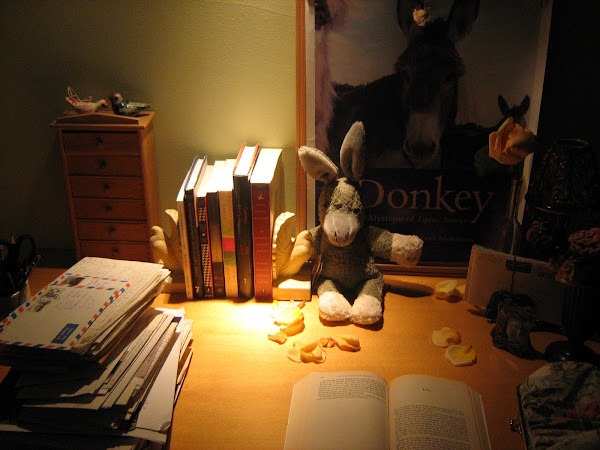
We’ve had a project in our house the last few months. We’ve been reading the Laura Ingalls Wilder series, and it’s been wonderful returning to it. There’s nothing quite like reading “On the Banks of Plum Creek” to two children in 2009. When we read them the fact that Pa walked three hundred miles in patched shoes to find a job that paid a dollar a day, they looked shocked and said, “What a gyp.”
The books really hold up. In fact, they are a good way to stop whining, especially after reading “The Long Winter.” The kids were less likely to complain about their dinner menu after reading that the Ingalls ate only brown bread (and not a lot of it) for three months. The recent article in The New Yorker about Laura Ingalls Wilder and how she wrote the books with her daughter, Rose, is excellent. But as a writer, I want to lodge a complaint about Mary.
Mary, as you may remember, is the oldest daughter, the one with the beautiful blonde curls, the one who is notable for being endlessly “good.” She becomes blind after having scarlet fever in book five, “By the Shores of Silver Lake,” and Laura is given the job of being her eyes.
This is when Laura, I think, starts becoming a writer—when she “sees out loud” for Mary. For example, there’s a beautiful description in which she is describing the prairie for Mary and says: “There’s just the big sky and grassy land, and the little low creek…It trickles along from pool to pool, by dry gravel stretches and cracked dry mud flat.”
Great job, Laura! But then Laura says this:
“The road pushes against the grassy land and breaks off short. And that’s the end of it.”
“That can’t be,” Mary objected. “The road goes all the way to Silver Lake.”
“I know it does,” Laura answered.
“Well, then I don’t think you ought to say things like that,” Mary told her gently. “We should always be careful to say exactly what we mean.”
“I was saying what I meant,” Laura protested. But she could not explain. There were so many ways of seeing things and so many ways of saying them.
Mary naturally wants to be told how the world looks. And Laura is trying to do it. But Laura is trying to describe the world in her way—metaphorically, poetically. And Mary becomes a literalist. She doesn’t want Laura to see things in her own way.
This happens other times in the book too. When she is describing a man, Big Jerry, who is riding away, Laura says:
“The brown prairie all around—and they rode right into the sun as it was going down. They’ll go on in the sun around the world.”
Mary thought for a moment. Then she said, “Laura, you know he couldn’t ride into the sun. He’s just riding along on the ground like anybody.”
But Laura did not feel she had told a lie. What she had said was true, too.
I found myself getting more and more annoyed with Mary as I read this book. For Mary-the-punitive- literalist is a familiar workshop type. As a creative writing student, and now as a teacher, I know that there can be a student in the class who is hell-bent on clarity. Over everything. Clarity is, in fact, important in writing—if a reader is confused, then the writer will lose him/her. But Mary is not just demanding clarity. She is telling Laura that her reality is not relevant. And this is a dangerous sort of critic for a writer.
How does a writer say what he/she means and not lose the audience? It can be a balancing act, between “seeing out loud” for the reader and “seeing your way.” Ideally, the best writing comes from an intersection between both—the description that communicates the image to the reader but that comes from the writer’s own unique point of view. It can take a lot of tries to get that particular image—and ultimately the most helpful critic will ask questions of the writer, not crush the writer.
Watch out for the Marys. For what Laura said was true, too.

Great post, especially the "punitive literalist" cognomen.
ReplyDelete